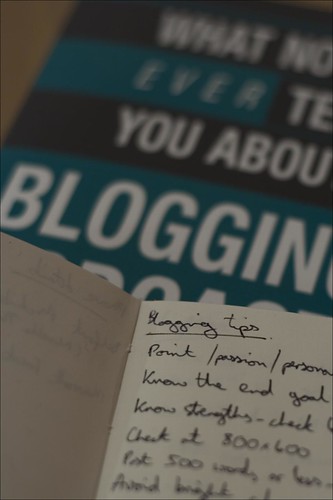Marketing
Marketing Presentation Tips: Holding Your Audience's Attention Right To The End
Posted on April 25th, 2012. Ever had that awful feeling that you're losing your audience? They start looking distracted. Perhaps even fiddling with their blackberries. There seems to be nothing you can do do get their attention back.
Ever had that awful feeling that you're losing your audience? They start looking distracted. Perhaps even fiddling with their blackberries. There seems to be nothing you can do do get their attention back.
And yet you know that if you're doing a marketing presentation, you need them to be concentrating at the end when you make your call to action. If no one's listening what hope do you have of getting them to follow up with you afterwards?
I'm going to share with you a little tip that will help you keep your audience alert and paying attention.
But first let's look at why it's so difficult to keep your audience awake…
Sadly, the attention span of most audiences is about 20 minutes. After 30 minutes of the typical presentation many are flagging badly. After 40, you've lost most of them.
And unfortunately, 40 minutes is the typical length of most keynotes.
The end result: most marketing presentations fail miserably to achieve their objectives.
Well, unless their objective was to get the audience to rush off at the end.
Keeping Your Audience Paying Attention To Your Marketing Presentation
What causes an audience to lose their attention?
Sometimes it's the skills of the presenter. A presenter who continually “ums” and “ahs”, speaks monotonously, and distracts you with annoying body language is always going to struggle.
But sometimes even very good presenters can lose your attention. In those cases the issue is often the structure of the presentation.
You see, we humans are made to keep on the lookout for the unexpected. A twig snapping or leaves rustling outside the cave that might indicate a predator is about to pounce.
If we hear that twig snap, we're on alert. We pay close attention to everything we see and hear. Adrenaline pumps through our veins keeping us wide awake.
But when we see that the twig was just our neighbour from the cave next door we relax. We know what the mystery was. We stop paying attention.
They use this all the times in horror films to scare us witless. They set up the scene. The potential victim hears a noise in the house. We're on edge waiting for something awful to happen. They keep us on edge, then…
It was only the cat. We relax.
Then boom, the axe murderer pounces and we all jump up in shock.
We can't help it. When we think we know what's coming, when the mystery has been removed: we relax and stop paying attention.
And this happens all the time in presentations.
The presenter starts by summarising what he's going to tell us. Then in the first few minutes he makes his main points. The rest is elaboration, evidence, variations on a theme.
Important stuff. But the moment we decide we know what's coming, we switch off.
If there's no mystery, there's no attention.
Have you ever started reading a detective novel or watching a “whodunnit” and someone gives away the ending?
How often do you read to the end of the book anyway or watch the full TV show?
If you're anything like me, pretty much never. The suspense, the mystery has gone. it's impossible to pay attention.
It's like that with presentations too. But with a twist.
Far too many presenters give away the ending too soon. Once they've “told 'em what they're gonna tell 'em” there ain't much mystery left.
If your audience think there's nothing new coming, their brains are hardwired to relax and stop paying attention (paying attention is hard work – you need to reserve it for important times when something new and dangerous might be coming).
So how do you turn this knowledge into an attention keeping marketing presentation?
Set up your main points at the start – but don't reveal them. Tell people you're going to reveal the 3 surprising secrets that the top ad agencies have kept to themselves for years (or whatever) – but don't tell them what those secrets are up front.
Use the “but first…” technique that I did at the start of the article to keep people anticipating the big reveal.
And once you've revealed your key points, if you have more to say you need to do something else to keep them paying attention.
That's the “twist” I mentioned above.
And I'm sure you've guessed by now, the twist is teeing up a new mystery to keep up the attention level. By saying “there's a twist”, for example.
Add these elements of structure to your marketing presentation and like a good mystery novel, you'll have your listeners hanging on until the very last word.


 Quick marketing quiz for you…
Quick marketing quiz for you… Probably the biggest question I get asked about blogging for business is how to come up with ideas for blog posts. Here's my method:
Probably the biggest question I get asked about blogging for business is how to come up with ideas for blog posts. Here's my method: